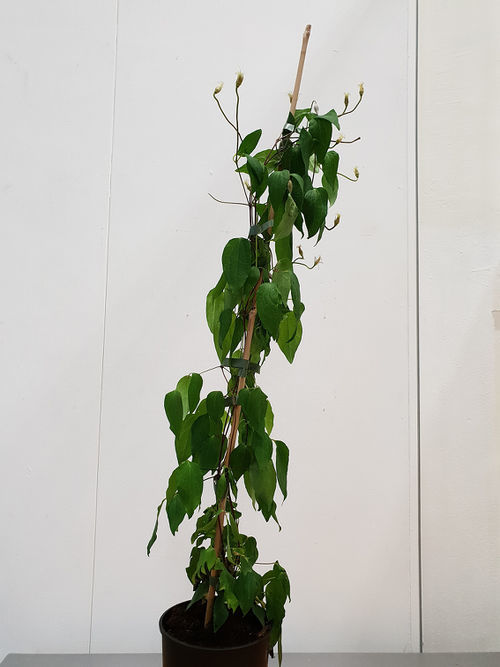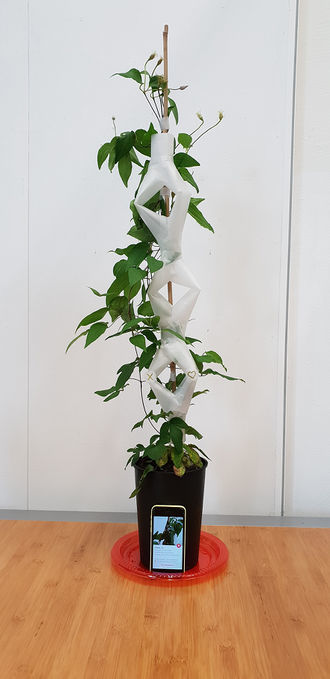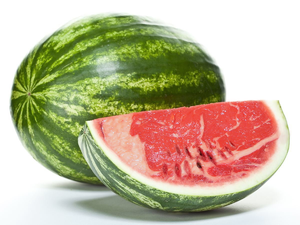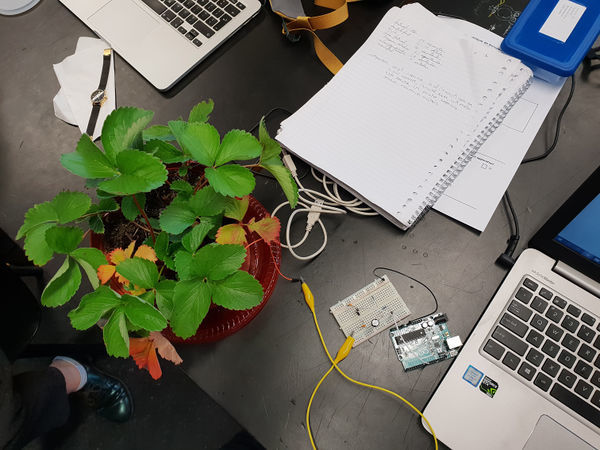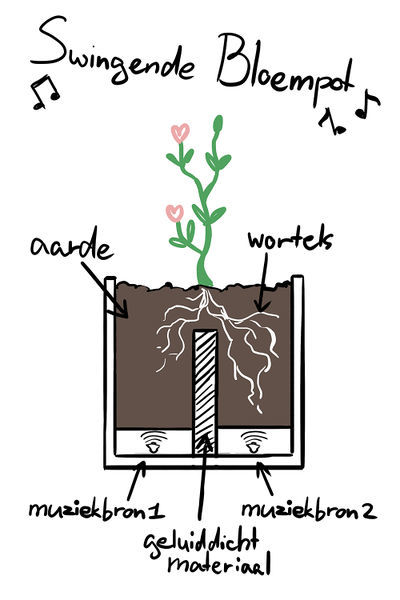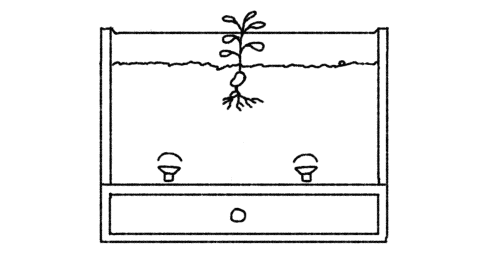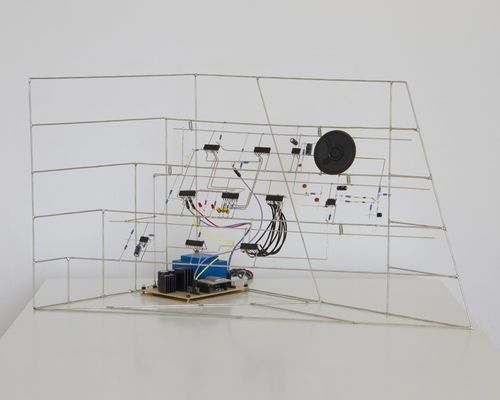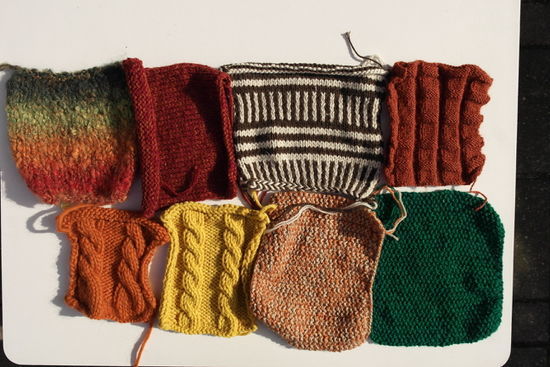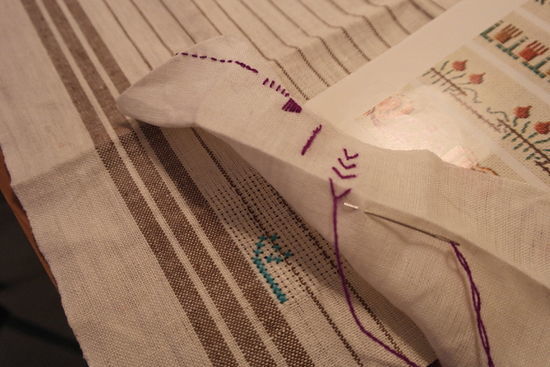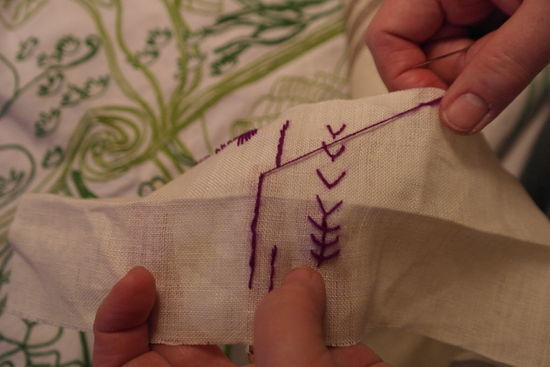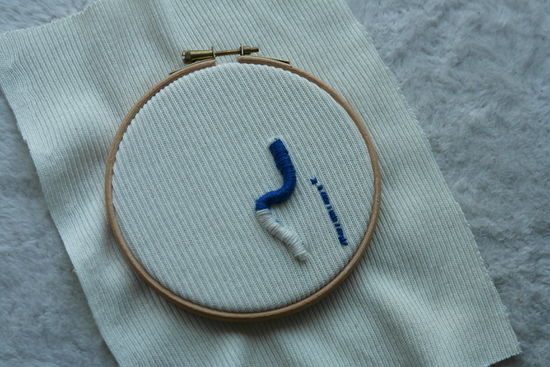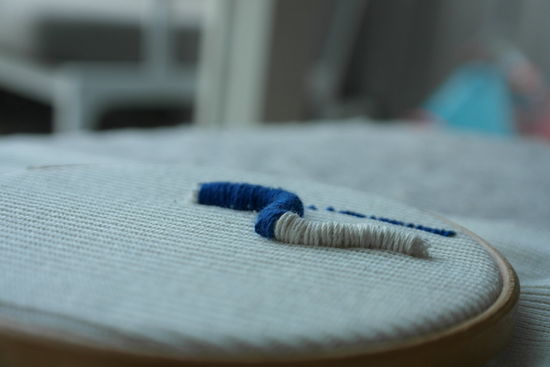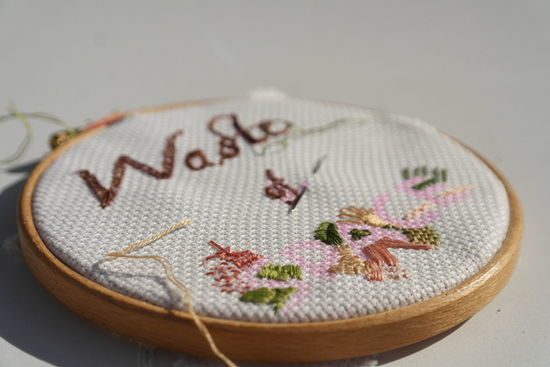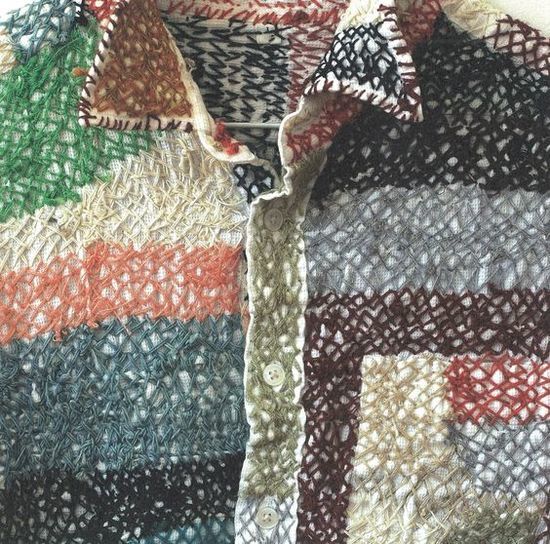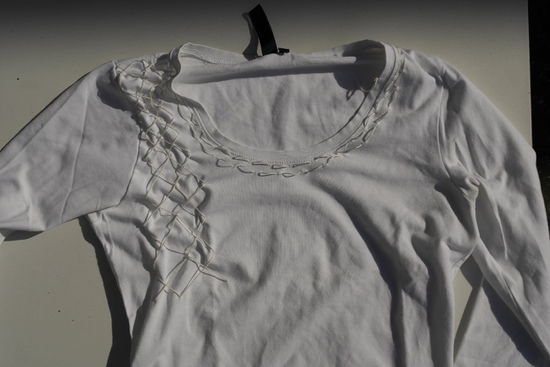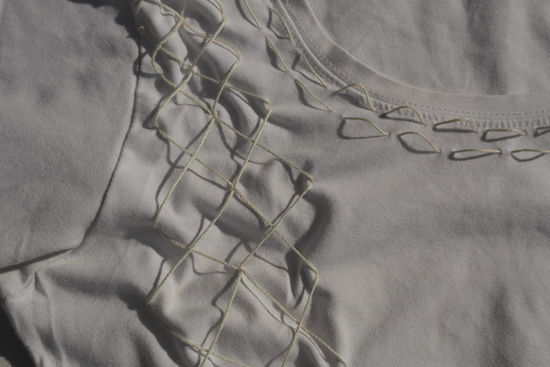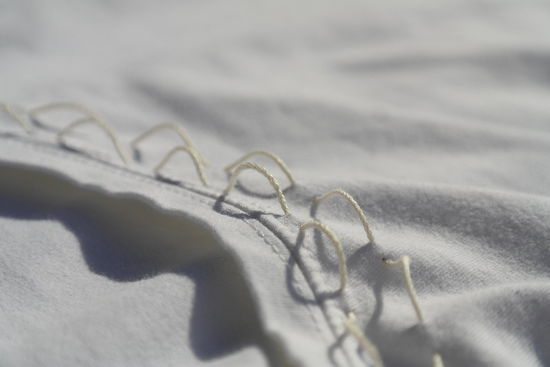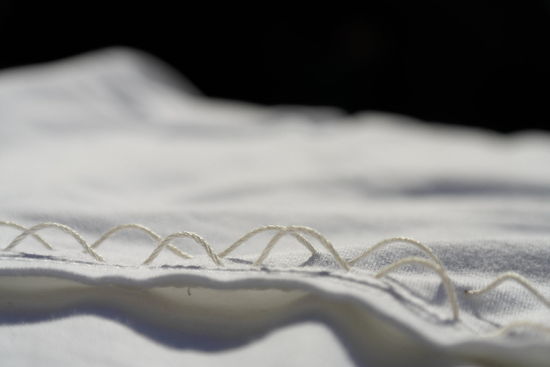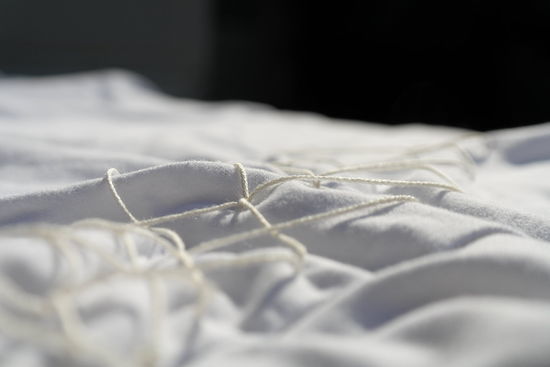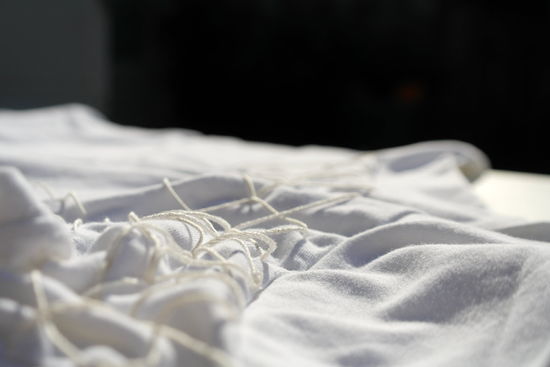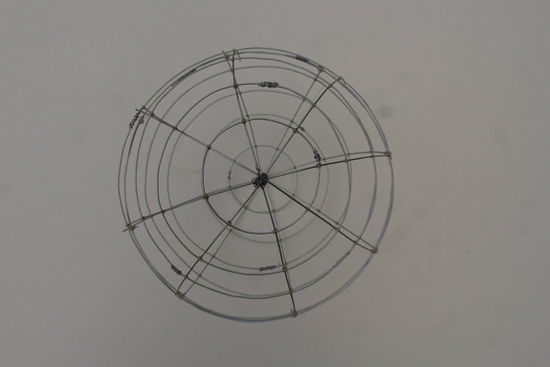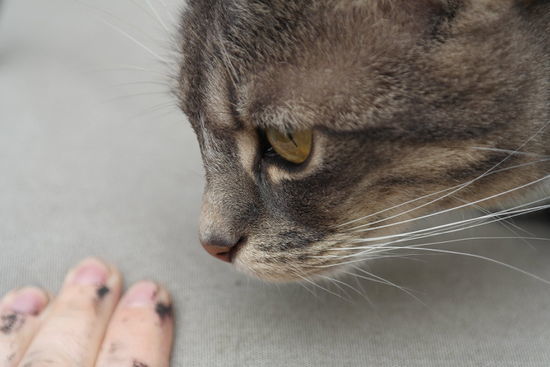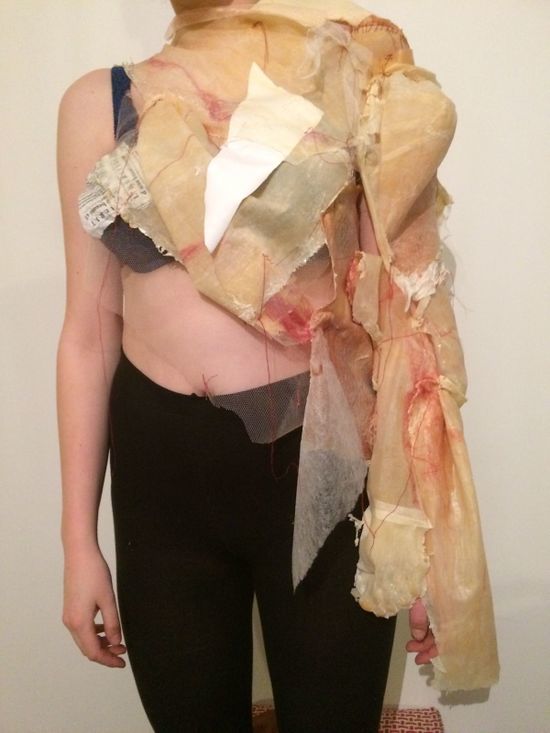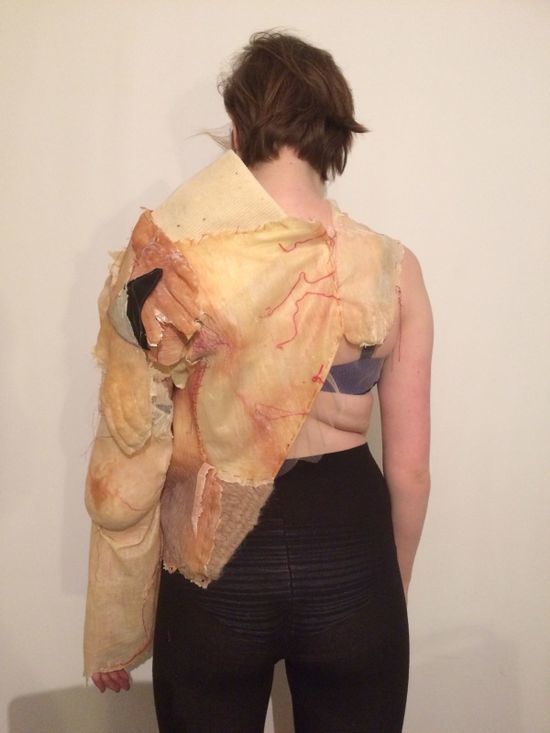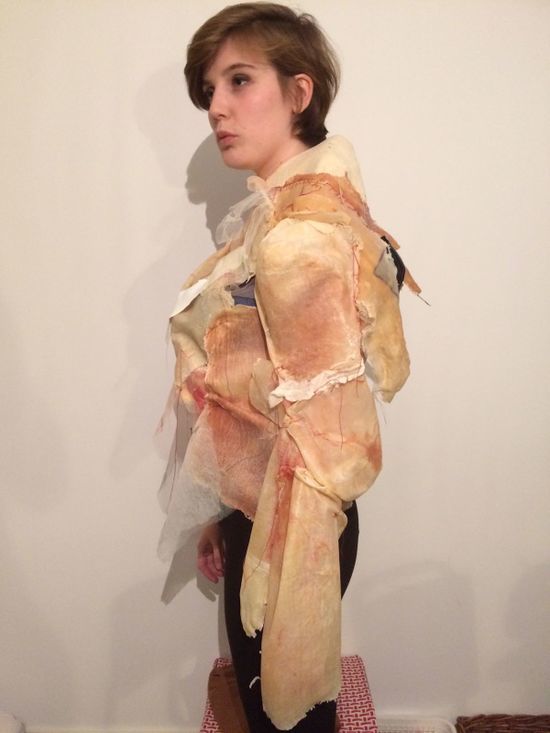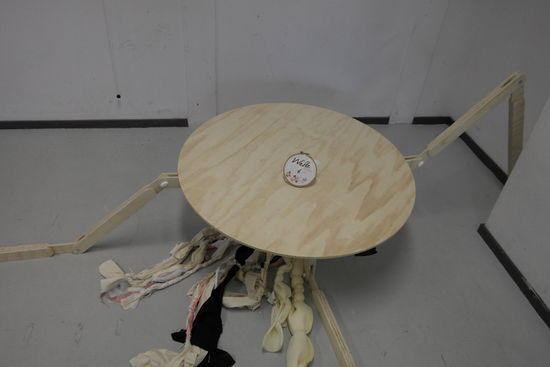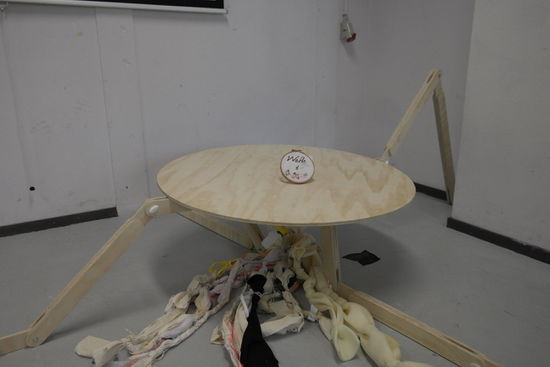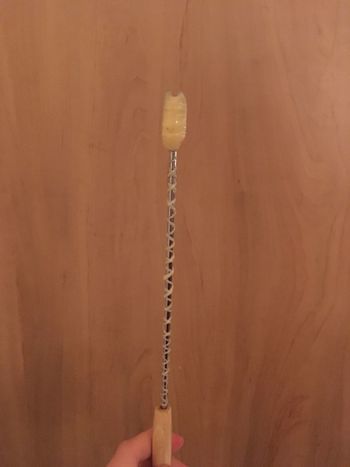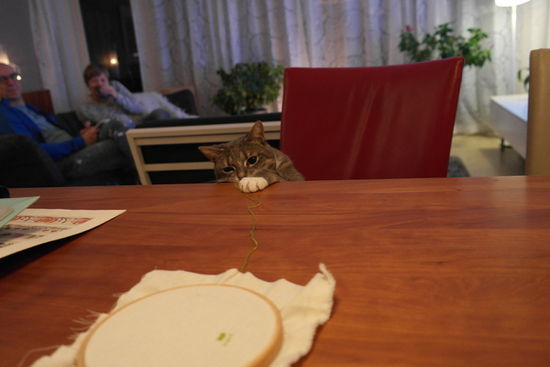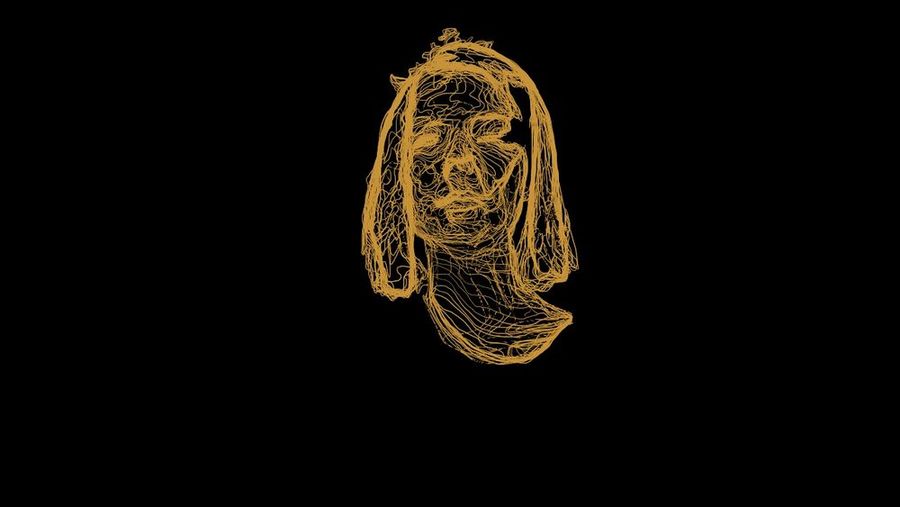Difference between revisions of "User:Dieke"
| (24 intermediate revisions by the same user not shown) | |||
| Line 1: | Line 1: | ||
| + | =Q13: Minor= | ||
| + | |||
| + | intro van wat ik wil gaan doen met deze minor, waar ik naartoe wil werken, hoop te leren oid, hoe ik het aan mn major ga koppelen: vooral voor mezelf een doel voor ogen houden waar ik naartoe werk zodat ik niet verdwaal in de dc madness. | ||
| + | |||
| + | ==first assignement== | ||
| + | - with the cards, referentie naar koens pagina, idee voor planten tinder met clovis | ||
| + | - daarna uitvoeren, de bak gemaakt om de muziekvoorkeur van planten te meten. (geen foto, moeten we nog recreeeren, waarschijnlijk met photoshop) | ||
| + | - iets over de teksten? | ||
| + | |||
| + | ==Digital Craft 2018: Cybernetics== | ||
| + | ===Project 1: Critical Making exercise=== | ||
| + | "Reimagine an existing technology or platform using the provided sets of cards." | ||
| + | ====Process==== | ||
| + | |||
| + | As this was a group assignment in which Koen had the task of keeping a logbook of our progress, I will simply use his text. Rewriting the exact same moments seems unnecessary and unproductive. | ||
| + | |||
| + | '''06/09/18''' - Today we assembled our teams and received our assignments. Our team consists of Annemarie (animation), Dieke (animation), Lot (graphic design), Karlijn (graphic design) and Koen (animation). For tomorrow we have to use the cards we received today to reimagine a certain technology or platform. | ||
| + | |||
| + | '''07/09/18''' - We started this day playing with the cards to see what kind of cool combinations we could make. After a while we settled with the idea of making an object designed for a tree. What if a tree could use a social network? We went for the following combination: "Make an object designed for a tree to use 'Social Networking'. Use folded paper to create a physical model of this new thing." | ||
| + | |||
| + | We just thought that this would be a funny thing to do, but the problem is that a tree does not give that much input to the world around him. We decided to keep it to just 'Yes' and 'No' decisions to keep it simple. This is how we arrived at Tinder, because not only is the idea of a tree on Tinder pretty funny, but it's also simple to use. You merely need to swipe to the left or the right whether you want to date a certain person or not. Maybe we could let the tree decide by letting it grow to either the left or the right... | ||
| + | |||
| + | For this prototype we decided to use a smaller plant instead of a tree, because it's much easier for a smaller plant to grow and to build an object for it. Our plan is to let the plant grow in a tube-like structure and let it decide to grow further in either the left tube or the right tube. In both tubes there is a sensor that detects whether it should swipe either left or right respectively. As of now we haven't figured out how to make the object swipe just yet. Today we made a prototype of the tube system out of paper, with one of the tube ways already being taken by the plant just to show what it would look like. We also made a Facebook and Tinder account for our plant: Clovis Clematis. | ||
| + | |||
| + | [[File:Clovispic.jpg | 500px]] [[File:TIndering001.jpg | 330px]] | ||
| + | |||
| + | '''13/09/18''' - For today we had to present Clovis and her cyborg appendage to the rest of the class. The reception was pretty okay. The main question that was brought up was 'How can a plant know that it is using Tinder?' Obviously it doesn't, but maybe we can convert the Tinder profile picture into sound and give the plant a choice instead of letting it grow by chance.In two weeks we need to have a prototype that works as much as possible. It doesn't have to be a continuation of project 1, but it does need: | ||
| + | |||
| + | -to be somewhat related to these explorations on reimagining technology. | ||
| + | |||
| + | -to be 3D, a real thing. | ||
| + | |||
| + | -to be simulating interactive feedback loops. | ||
| + | |||
| + | ===Project 2: Cybernetic Prosthetics=== | ||
| + | |||
| + | "In a small group, you will present a prototype of a new relationship between a machine and a biological organism, relating to your explorations on reimagining technology in the posthuman age. The prototypes should be materialized in 3D form, and simulate interactive feedback loops that generate emergent forms. As the 4th years, you will need to take your project to the next level as a fully functional work." | ||
| + | |||
| + | '''14/09/18''' - Today we were trying to figure out what our next project should be about. As we were in the mindset of plants with our previous project. First, we thought about a concept relating to the habitat of trees and that affects their lifespan. For example trees in the city grow faster than trees in the forest, due to the amount of CO2 in the air around them, but they also have shorter lifespans. We thought about adding a meter to a tree for it to know the amount of CO2 around him, but it wouldn't really add some sort of feedback loop so we scrapped it. There was also the idea that we could use CO2 as a building material. But the idea that we were most excited about was about a plant that grows meat instead of fruit. This could be an alternative to meat from animals. | ||
| + | |||
| + | [[File:Watermelon meat 3.png|300px]] | ||
| + | |||
| + | '''17/09/18''' - We decided to keep the project a bit more realistic and to focus back on plants making decisions. The idea was to bring the decision to make more to the plants this time and present them two different kinds of music. We know that plants can detect vibrations, we want to know if they have a preference. We're also planning some experiments to see what kind of effects music has on plants. What's interesting as well is a way to record where you're touching the plant: https://www.youtube.com/watch?v=EcRSKEIucjk | ||
| + | |||
| + | We are going to do our own experiments to see how music affects plants. I wanted to grow a couple of bean plants (they grow quite big quite easily) and make one pot of them listen to a podcast on repeat, and another pot of plants listen to static continuously. | ||
| + | |||
| + | Unfortunately, the first batch of bean plants all moulded in the tiny greenhouse thing I had them growing in. I wasn't sure if these beans hadn't been used for blind baking (I was about 80% sure) so I bought another pack of beans to trie again. | ||
| + | |||
| + | Alas, these died as well. I don't know why, because I have grown several (bean)plants this way and this is the only time it completely failed, but I cannot use these plants in time for an experiment. We had already kind of moved on from these separate experiments anyway since we wouldn't be able to get any conclusive answers in time anyway due to the slow growth of plants. | ||
| + | |||
| + | '''20/09/18''' - Today we tried getting a reaction from the plant by touching it, like in the video of "BOTANICUS INTERACTICUS". The technology they used to do this is called Touché and we tried to replicate it with Arduino as Nick Arner did here: https://www.youtube.com/watch?v=ZPsU6U54CRM | ||
| + | We got pretty far with the help of Javier, but eventually, we found out that for this experiment to work, Arduino needs to be communicating with a different program we didn't have. So we couldn't continue. | ||
| + | |||
| + | [[File:Arduinoworkplce2212.jpg|600px]] | ||
| + | |||
| + | Javier did connect us with some very interesting and useful sites: | ||
| + | |||
| + | https://github.com/damellis/ESP/wiki/%5BExample%5D-Touch%C3%A9-swept-frequency-capacitive-sensing | ||
| + | |||
| + | https://www.bright.nl/nieuws/artikel/4034676/disney-maakt-elke-plant-aanraakgevoelig | ||
| + | |||
| + | https://www.nickarner.com/blog/2017/7/8/talking-to-plants-touch%C3%A9-experiments | ||
| + | |||
| + | After that we looked back at our Clovis experiment, trying to find a different way of making plants react to and decide their music. We thought of a way to create a feedback loop in which the plant is searching for his favourite tracks. The pot is separated in two halves and each half has a speaker playing its own distinct music. A bean/seed is placed above the separation, allowing it to grow to both sides. Using some kind of transparent soil, a webcam and MAX7, we are able to distinguish the difference in colour between the two halves. Roots have some kind of white colour, so if one side contains more white than the other, we assume that the plant prefers the music on the whiter side more. Therefore, the music on the part with the most roots will keep playing and the music on the other side will switch. | ||
| + | |||
| + | [[File:Dancingpotboi.jpg|400px]] | ||
| + | |||
| + | '''21/09/18''' - We got together and made a list of things we need to do for next Thursday. We'll need to build a box for the plant, transparent soil to see the roots, a webcam to record the amount of white colour in the transparent soil and the code to recognize the change in whiteness and to switch music tracks if necessary. We made the design for the box today as well as the majority of the code needed to build this prototype. | ||
| + | |||
| + | '''26/09/18''' - This time we were preparing for next day's presentation, deciding who should talk about what. Karlijn and Lot were working on a powerpoint, Annemarie and Koen worked on some drawings and animations to show during the presentation and I had finished the box. | ||
| + | |||
| + | [[File:Plant3ALT.gif]] | ||
| + | |||
| + | '''27/09/18''' - Our presentation was today and I think it went well. We got a bunch of references from Shailoh and Ivan that might be really interesting to look more into: | ||
| + | |||
| + | Eirik Brandal: He makes electronic sculptures using all kinds of resistors, wires, conductors and more. His projects experiment with sound and shape, they look like sculptures trying to teach us about the anatomy of machines. Very interesting. | ||
| + | |||
| + | [[File:BrandalSculpture01010.jpg|500px]] | ||
| + | |||
| + | Sebastian Frisch: It's almost scary how similar his project 'Biophonic Garden' is to ours. He built a water tank with plants that are influenced by different vibrations and growing their roots towards the speaker. | ||
| + | |||
| + | [[File:Biophonic garden 099485.jpg|500px]] | ||
| + | |||
| + | Fedde ten Berge: Coin|Switch is a very atmospheric art installation in which the visitors can combine different sounds by operating various buttons. | ||
| + | |||
| + | https://www.youtube.com/watch?time_continue=113&v=nVRKXz_8Qas | ||
| + | |||
| + | ==second assignement== | ||
| + | - workshop choreografie oid | ||
| + | - uitleggen hoe dat filmpje gemaakt, hoe we daar zijn gekomen, wat we er mee wilde doen | ||
| + | -was fun | ||
| + | |||
| + | |||
| + | Choreagrafie in de gymzaal, alles is choreaografie I guess, Interessant, bewegingen doorgeven. Pairing words together. We wanted to work with headache/migraine, something human on hopw a computer would experience that. Tried to work in processing, found some examples/already made code from ohter peopl on ____site, tried to put it in processing but didn't work, tried for very long time to figure it out, messed around with different visuals on the site by changing the code that was already there. Found out we could work with a camera and tracking and stuff what we really wanted. Eventually went to the interacting station where Brigit helpen us a lot. Turns out the processing on the website was in a different language than in the program, so they couldn't understand each other. | ||
| + | Wasn't too much time left so we worked with some permade thingys in the program, one that would alter the visual input from the webcam, on which we added sound, and one in which we changed the size of the schermpje. I made the one wiht the aduio. Used _____ in processing (describe step by step pls) and added code from a different one, to add in the sound. Result was red cvisual with heartbeat sound. | ||
| + | People found the second one more interesting. Though it was easier to make it was more effective, and even got a giggle or rtwo because it looked like a funhouse mirror. | ||
| + | |||
| + | ==third assignement== | ||
| + | - open blackbox | ||
| + | -started with the intercom system and the typewriter (put in supercut of openingfilm) | ||
| + | - now with the wuvluv | ||
| + | - struggle struggle | ||
| + | |||
| + | |||
| + | Tried to connect with the mom though different machines that also send infrared signals but they were too simple and only got a 2 very short responses. The baby is apperently a lot more complicated than I thought and right now broken so that ends that. | ||
| + | |||
| + | What i foudn a lot more interesting was the interaction and response the wuvluv got from people. It always asked for attention, even when turned of, because it is weirdly shaped and brightly coloured. When I was working on it with Brigit we gkept making it say the same frases and I think the guys accros from us got slight;ly annoyed but were laughing a lot, they started to answer the machine, When she said things like Ik vind jou lief (I think you're sweet) they would answer Nou ik jou niet (Well you're not). Which was interesting: They are too old for the toy but the intereaction still works, although in a different, more negative context. | ||
| + | |||
| + | ==fourth assignement== | ||
| + | - mapping | ||
| + | - timeline: what thread is connecting them? can connect to projects from before dc | ||
| + | interaction, input from the people and from the work | ||
| + | - whats next? | ||
| + | |||
| + | |||
=Q8: Wrapping= | =Q8: Wrapping= | ||
==What is wrapping?== | ==What is wrapping?== | ||
| − | + | You might think of wrapping as in wrapping a present. But it goes beyond that. Wrapping as a craft is about making temporary connections in a material (usually a thread of some kind) to bring ather materials or things together. It is a technique used to construct, without changing the materials or the structure of these materials. It therefore stands opposite the craft of fusing, in which the material used will almost always change, usually going from fluid to solid, in order to construct. | |
The term “wrapping” can still be used quite loosely, but these are the most commonly known techniques that fall under it: sowing, knitting, roping, weaving, embroidery, binding, knotting, tufting, twisting and twirling. I will not be going into all of these, just the ones that I used for my project. | The term “wrapping” can still be used quite loosely, but these are the most commonly known techniques that fall under it: sowing, knitting, roping, weaving, embroidery, binding, knotting, tufting, twisting and twirling. I will not be going into all of these, just the ones that I used for my project. | ||
| Line 11: | Line 126: | ||
===knitting=== | ===knitting=== | ||
| − | At first I tried some knitting, for that is one of the techniques I have already tried. Since knitting hasn’t really changed throughout the ages (it is still a thread, usually of wool and two needles) I simply made some examples using different stitches, to demonstrate the technique. | + | At first, I tried some knitting, for that is one of the techniques I have already tried. Since knitting hasn’t really changed throughout the ages (it is still a thread, usually of wool and two needles) I simply made some examples using different stitches, to demonstrate the technique. |
[[File:SAM 3513.JPG|550px]] | [[File:SAM 3513.JPG|550px]] | ||
| Line 18: | Line 133: | ||
Knitting is a method by which yarn is manipulated to create a textile or fabric. Knitting this yarn, it creates multiple loops, called stitched, in a line or tube. Knitted fabric consists of a number of consecutive rows of interlocking loops. There are many different types of stitches that can be used, some even to give a lace effect. | Knitting is a method by which yarn is manipulated to create a textile or fabric. Knitting this yarn, it creates multiple loops, called stitched, in a line or tube. Knitted fabric consists of a number of consecutive rows of interlocking loops. There are many different types of stitches that can be used, some even to give a lace effect. | ||
The first commercial European knitting guild appeared in the early fifteenth century in Tournai. | The first commercial European knitting guild appeared in the early fifteenth century in Tournai. | ||
| − | The skill itself hasn't changed much over the years, but machines have been developed for mass produced knitted products. With this invention knitting by hand became mostly a leisure activity for the wealthy. | + | The skill itself hasn't changed much over the years, but machines have been developed for mass-produced knitted products. With this invention knitting by hand became mostly a leisure activity for the wealthy. |
===embroidery=== | ===embroidery=== | ||
I later tried out embroidery as a new technique, and since I already did the research, I will provide it for you here: | I later tried out embroidery as a new technique, and since I already did the research, I will provide it for you here: | ||
| − | For embroidery a thread and needle are used, much like sowing, although this technique is mainly used to embellish a fabric or clothing, unlike sowing which is used to construct. | + | For embroidery, a thread and needle are used, much like sowing, although this technique is mainly used to embellish a fabric or clothing, unlike sowing which is used to construct. |
| − | Using different kind of stitches patterns and shapes are created, sometimes even using pearls, beads, quills and sequins to put on the thread, to attach it to the fabric. | + | Using a different kind of stitches patterns and shapes are created, sometimes even using pearls, beads, quills and sequins to put on the thread, to attach it to the fabric. |
The basic techniques or stitches on surviving examples of the earliest embroidery—chain stitch, buttonhole or blanket stitch, running stitch, satin stitch, cross stitch—remain the fundamental techniques of hand embroidery today. | The basic techniques or stitches on surviving examples of the earliest embroidery—chain stitch, buttonhole or blanket stitch, running stitch, satin stitch, cross stitch—remain the fundamental techniques of hand embroidery today. | ||
| Line 39: | Line 154: | ||
==New Skill== | ==New Skill== | ||
| − | As I mentioned before, as a new skill I wanted to learn embroidery. I have had | + | As I mentioned before, as a new skill I wanted to learn embroidery. I have had previous experience with the embroidery machine (see video below), therefore I won’t be using that for this practice. |
video https://www.youtube.com/watch?v=whLWVln3XA8 | video https://www.youtube.com/watch?v=whLWVln3XA8 | ||
| − | Though I enjoyed working with the machine and how easy it was to physically make anything I could draw (or trace) on fabric, it did make me feel distant from the actual technique. It did get me interested in embroidery, making me determent to try it. Luckily I have a mother who is quite skilled (with plenty of threads and needles) and some inspiration from | + | Though I enjoyed working with the machine and how easy it was to physically make anything I could draw (or trace) on fabric, it did make me feel distant from the actual technique. It did get me interested in embroidery, making me determent to try it. Luckily I have a mother who is quite skilled (with plenty of threads and needles) and some inspiration from an even more skilled grandmother. |
| − | Put in | + | Put in picture of grandma’s “painting” |
I at first learnt some stitches: | I at first learnt some stitches: | ||
| Line 52: | Line 167: | ||
[[File:SAM 3455.JPG|550px]] [[File:SAM 3456.JPG|550px]] | [[File:SAM 3455.JPG|550px]] [[File:SAM 3456.JPG|550px]] | ||
| − | I got the advice to follow a pattern from one of those packages, to start with something easy. But knowing that I could count just fine I wanted to try to make a pattern of my own. So I made a design, got a special pencil to transfer said design onto the embroidery fabric, and went at it. It did get a package with everything I would need | + | I got the advice to follow a pattern from one of those packages, to start with something easy. But knowing that I could count just fine I wanted to try to make a pattern of my own. So I made a design, got a special pencil to transfer said design onto the embroidery fabric, and went at it. It did get a package with everything I would need but simply ignored the pattern. I mostly got it because it promised me chocolate scented threads. It kind of delivered? Though not in a pleasant way… yuck. |
| − | I decided I wanted to not just make a nice design, but to put a bit of a statement in there. I put the text “Waste of Space” on a tin piece of fabric, that in the future would make a tiny pillow (sorry that it isn;t finished yet, but man, embroidery really is a lot of work, especially if you still mess up as much as me :( The pillow will be so small that it will be basically useless, making therefore a kind of useless skill (as it is only there to decorate) on a useless product. A waste of space. But I guess, just as in the eyes of Immanuel Kant, anything that is pretty or considered art is and should be useless, therefore making what otherwise would be a nice | + | I decided I wanted to not just make a nice design, but to put a bit of a statement in there. I put the text “Waste of Space” on a tin piece of fabric, that in the future would make a tiny pillow (sorry that it isn;t finished yet, but man, embroidery really is a lot of work, especially if you still mess up as much as me :( The pillow will be so small that it will be basically useless, making, therefore, a kind of useless skill (as it is only there to decorate) on a useless product. A waste of space. But I guess, just as in the eyes of Immanuel Kant, anything that is pretty or considered art is and should be useless, therefore making what otherwise would be a nice DIY project for Pinterest into a piece of art. |
[[File:SAM 3486.JPG|550px]] [[File:SAM 3507.JPG|550px]] | [[File:SAM 3486.JPG|550px]] [[File:SAM 3507.JPG|550px]] | ||
| Line 62: | Line 177: | ||
==Comparative Example== | ==Comparative Example== | ||
| − | For the comparative example I wanted to try mixing different wrapping techniques, so I tried sowing with and embroidery technique. It might not be the most exciting thing I tried | + | For the comparative example, I wanted to try mixing different wrapping techniques, so I tried sowing with and embroidery technique. It might not be the most exciting thing I tried since sowing and embroidery are quite similar, but I wanted to try anyway, to see if it could lead to anything interesting. It was that or embroidering onto a knitted fabric to create a pattern, but that is something my mom could’ve taught me, and I wanted to just try something. |
So this is a shirt that I at first just embroidered on. It was a part of my “waste of space”-statement. I was inspired by this: | So this is a shirt that I at first just embroidered on. It was a part of my “waste of space”-statement. I was inspired by this: | ||
| Line 68: | Line 183: | ||
[[File:Ee3bec1f38f2528eb8372cae49635a8e.jpg|550px]] | [[File:Ee3bec1f38f2528eb8372cae49635a8e.jpg|550px]] | ||
| − | (also here a link to my | + | (also here a link to my Pinterest board, with many, many more pictures that I collected and used as inspiration/an excuse to be on Pinterest and still working on the school: https://nl.pinterest.com/forschoolpinter/practice-q7/ ) |
| − | I wanted to make something useless. I wanted to go against the nature of embroidery (having started with this technique, I thought: why not continue?) Since embroidery is there o decorate and be seen, I wanted to use threads with | + | I wanted to make something useless. I wanted to go against the nature of embroidery (having started with this technique, I thought: why not continue?) Since embroidery is there o decorate and be seen, I wanted to use threads with the same colours as the fabric, adding basically nothing to the item with a technique that is supposed to stand out and be seen. In a gloomier evening, I wrote that it might be a metaphor for life: it's f*cking useless, but it’s something (a quote from my notes). In the end, it’s just endless rows of stitches, unnoticeable and unimportant. But it’s something. |
[[File:SAM 3488.JPG|550px]] [[File:SAM 3489.JPG|550px]] | [[File:SAM 3488.JPG|550px]] [[File:SAM 3489.JPG|550px]] | ||
| − | (once again not entirely filled up with stitches, as had been my plan. I thought this might also bring my point across, and leave me with more time for the other examples and other ideas | + | (once again not entirely filled up with stitches, as had been my plan. I thought this might also bring my point across, and leave me with more time for the other examples and other ideas since I was starting to run out.) |
| − | When taking pictures it actually | + | When taking pictures it actually turned out to be a visually interesting piece. I would love to someday use some of the pictures as inspiration for an animation, perhaps for a background or setting. |
[[File:SAM 3498.JPG|550px]] [[File:SAM 3501.JPG|550px]] | [[File:SAM 3498.JPG|550px]] [[File:SAM 3501.JPG|550px]] | ||
| Line 82: | Line 197: | ||
| − | I later cut up | + | I later cut up the shirt and tried to sow it back together using embroidery techniques and materials (you use a thinner thread, sharper needle and different stitches for sowing): |
Picture of shirt | Picture of shirt | ||
| Line 93: | Line 208: | ||
==Pushed to the Limit== | ==Pushed to the Limit== | ||
| − | At first I didn't really know where to go with this. I thought of the classic wrapping technique and did notice a common theme: most of them were quite flat. Always making or on fabric, kind of 2D. So I wanted to try to make a 3D structure using wrapping technique, with a bit of | + | At first, I didn't really know where to go with this. I thought of the classic wrapping technique and did notice a common theme: most of them were quite flat. Always making or on fabric, kind of 2D. So I wanted to try to make a 3D structure using a wrapping technique, with a bit of an unconventional material (for wrapping at least). |
[[File:SAM 3546.JPG|550px]] [[File:SAM 3545.JPG|550px]] | [[File:SAM 3546.JPG|550px]] [[File:SAM 3545.JPG|550px]] | ||
| Line 134: | Line 249: | ||
hopefully a table of content will magically appear | hopefully a table of content will magically appear | ||
| − | =Mini Exhibition= | + | ==Mini Exhibition== |
[[File:SAM 3565.JPG|550px]] | [[File:SAM 3565.JPG|550px]] | ||
[[File:SAM 3562.JPG|550px]] | [[File:SAM 3562.JPG|550px]] | ||
| Line 181: | Line 296: | ||
==one slightly longer video: Light== | ==one slightly longer video: Light== | ||
| + | ===Light=== | ||
| + | |||
| + | |||
| + | ''The black rectangle is a gif: click to play (may need to click twice)'' | ||
| + | [[File:Sunrise face.gif|1000px]] | ||
| + | |||
| + | I wanted to do something with the light on your face and how we use light at night to replace daylight. My original idea was much longer, but due to time I kept it short. I planned to make a couple of these shots, also with the light as if someone's on their phone, or a car passing by, or light from a fair, things you might pass by at night that give of a lot of (artificial) light. I then wanted to put (wehre there is anow a sunrise, which is what I had in mind for this piece) a video of the thing that the artificial light is trying to recreate on the face. So for instance the light from a phone shining up on your face would be filled in with a video of a social meeting in daylight. | ||
| + | But like I said, time and prioritizing, so I made a small part to show the visuals and how I could go further with this. | ||
| + | |||
| + | ===Proces=== | ||
| + | ''-I wanted to put the different videos in as gifs but some were too big for the wiki, so I put them in as links to youtube-'' | ||
| + | |||
| + | |||
| + | First I shot a video: | ||
| + | |||
| + | [https://www.youtube.com/watch?v=kLVbl-CktgQ&feature=youtu.be '''Original film (shortened version)'''] | ||
| + | |||
| + | The first video I shot was too light, so I couldn't clearly see the "outline" of the light, so I redid it in a darkened room. | ||
| + | |||
| + | |||
| + | |||
| + | Then I rotoscoped the outline of the light, only looking at the light on my face and hair: | ||
| + | |||
| + | [https://www.youtube.com/watch?v=esfH98_FZi0&feature=youtu.be '''video2'''] | ||
| + | |||
| + | Opening a new file without the original video: | ||
| + | |||
| + | ''The black rectangle is a gif: click to play (may need to click twice)'' | ||
| + | [[File:First drawn version light face.gif|1000px]] | ||
| + | |||
| + | FIlling in the background: | ||
| + | |||
| + | [[File:Second drawn version light face.gif|1000px]] | ||
| − | + | Last part was changing the mask to black and putting the sunrise video behind it: | |
[[File:Sunrise face.gif|1000px]] | [[File:Sunrise face.gif|1000px]] | ||
| + | |||
| + | |||
| + | |||
| + | All the layers from the gif made an interesting image: | ||
[[File:All the light linesyellow1.jpg|1000px|all the frames from the gif layered]] | [[File:All the light linesyellow1.jpg|1000px|all the frames from the gif layered]] | ||
| Line 190: | Line 342: | ||
==What next?== | ==What next?== | ||
| + | |||
| + | (this is the second time writing this text (thnx wiki for logging me off and deleting the text) and I forgot most of what I wanted to say because my brain is fried. So good and bad news: less to read, but less information). | ||
| + | |||
| + | Was struggling with this. First thought of ... Okay, I wrote down my entire thought process for this but my brain is a mess due to lack of sleep so I'm just going to describe what I want to do in Q10. | ||
| + | |||
| + | I want to build some kind of sculpture with a projection overlay. The projection would kind of tie into the light project I made. | ||
| + | The goal is to confuse people with the image, to make them lose their sense of reality, and question what they're seeing. | ||
| + | |||
| + | The projection will be a visual similar to the sculpture, but slightly warped, or moving, making it confusing to look at the sculpture. Like an optical illusion. | ||
| + | I would like to try to make a simplified projector, perhaps one that the viewer would be able to control slightly, so something like twisting the lens to warp the image. | ||
| + | There would be a goal attached: something that would make the viewer want to see the sculpture more clearly, thinking that changing the light would be the solution, but since the projection and the sculpture would never truly overlap and always stand in each other's way, the only solution would be to stand in front of the projector to block the light entirely. Then something would become visible on the sculpture, giving the viewer something of an "Aha!"-moment. | ||
| + | |||
| + | The project is based on my experience with the digital environment: although I love spending time on the computer, I also hate spending time in this digital reality. I dislike the strange combination of something so easy, entertaining and addictive but at the same time surreal, confusing and distant. My view becomes more clear when working with 3D modeling programs, like maya or 3D coat: I know what I want to make, and if you give me a piece of clay I'll be able to make it, but a computer has such a different way of thinking that it makes something easy become difficult. I look at a 2D screen in which I have to make a 3D object, something I'll never be able to touch and never seems real, though I do feel sad when maya crashes and deletes it. | ||
| + | |||
| + | It is this digital environment that gives my brain some kind of itch, but that does make me appreciate "real life" craft more. So I want to use this assignment as an opportunity to work with craft, and make something in the physical world, but will combine it with digital visuals to give the viewer my experience with digital reality. | ||
| + | |||
| + | |||
| + | - What kind of sculpture will I make? Why? (what can I base this on?) | ||
| + | - What will the projection look like? What will it have to do? How will it work together with the sculpture? | ||
| + | - Will my idea come across? Or is it too closed off? Can people still have their own experience, or is it too obvious? | ||
| + | |||
| + | Jon feedback: | ||
| + | (later remove this? or edit) | ||
| + | |||
| + | |||
| + | |||
| + | ==Light under water== | ||
| + | since I'm more interested in using this practice for making something other than a video I (for now) dropped the idea of making a narrative video. Instead I worked on making something that would be interesting, focussing more on the visual than the narrative of meaning, for trying to tie any kind of "conclusions' to the project now would feel kind of forced. I do think I might need to formulate a clear research question, to form an angle to look at things, but since I kept getting stuck and being unhappy with ideas I thought it best to just try to make something, and ideas would spring from there. | ||
| + | |||
| + | So I did think more about projecting something on an object, but I didn;t really know what, and felt that was important for it could easily become a disney-world animatronic-situation, something I'd like to avoid. I kept going with the idea, and ended up with a projection through water. It's something I've wanted to try for a while, and am interested in what I can do with it. | ||
| + | |||
| + | I made a kind of tube/box, the inside covered in reflective (wrapping)paper, that would neatly fit a small container on top and a phone on the inside. I used my phone as a light source: I could use the flashlight but mostly so I could play video's, and lay it underneath the container, which I filled with water. | ||
| + | |||
| + | Results: | ||
| + | It turns out that mostly the screen of my phone is not a strong enough light source, so I did get seom kind of water/light ripples relfected on a white "wall" but it was not very clear, especially for the camera. I do still want to make that work, I liked the flashing colours and would like to try something with a moving light, but I'd have to use some kind of projector, but I don;t think the school would like it very much if I hung a container of water above one of their beamers... so that's something to work out. | ||
| + | When I used the flashlight instead it had a much bigger effect, more in the lines of what I'd expected. It relfected all off the walls and the ceiling. I thinkt the shapes were created by a combination of the shape of the container and the geometric shapes in the relfective paper, since they did get influenced by the movements of the water but were still there when that water was still. I would like to use a bigger container with water: I'd then be able to make bigger and more interesting ripples or a constant movement, for it was now still a but static. | ||
| + | |||
| + | I'd like to continue with this, being improving this with a better light source, a bigger container and a different video underneath, or use it in something else, try more with reflection and movement. | ||
| + | |||
| + | |||
| + | Jon Feedback: | ||
| + | More around the theme How to be Human, explore and try more, where on what is it relfected? What is moving that water and why? Maybe a clock, some animal going through it, something. | ||
| + | |||
| + | ===seperate thoughts=== | ||
| + | Was also thinking about can machines be unpredectable? Can they be bored? What if a "bored" machine would make it move? idk try more, I guess. guh | ||
| + | |||
| + | ==How to be un-human?== | ||
| + | |||
| + | I turned the question around: how to be inhuman? What does it mean to human, you can also view it from the other side: what is not human? (came to this after watching dwdd college about symmetry, the guy that solved a math thing by not thinking all the things it could, but by trying to prove it could not be, don’t remember exactly what but thats not important) | ||
| + | |||
| + | I talked about it with a friend, about what we see as inhuman, or not human. At first we though of things like war, and violence, things we would easily say to: how could they do that? they are not human, they are monsters. But we don’t see any other species fighting each other in the way we do: I don’t think a wild animal would torture another for any kind of reason. So these are things that are actually very specifically human, but simply sides of our nature that we’d rather not see. They are as much un-human but rather unethical; things that we condemn other humans for, to put them outside of our society, to say they no longer belong with us, are no longer part of our group called “humans”, rather calling them monsters or animals (even though humans are animals but that is a discussion for another day). Putting them outside for our safety but perhaps also fear, because if they are not human, then they are not like us. If they are, than perhaps any of us could, even ourselves, could be like them, which is a scary thing to think about. | ||
| + | |||
| + | Then what about robots and machines? They are something we still don’t recognize as humans, and this is an interesting one, because now we get to consciously define when something or someone gets to be human. It is no longer only our offspring, because we can make robots just as much as babies, which are both things that can think and do, they can make and make mistakes, they can change and grow and need sustenance to stay conscious. | ||
| + | Physical appearance is a big part of this: robots do have to go through the uncanny valley, but once they come out, or stay far enough on the other side, they can be considered humans, or we can recognize body language and emotions on them, personality, and we can grow attachments on them. Metal skin does throw up a barrier but these days we can make silicones and fur and other synthetic warm materials to cover it all up for a nice hug. But we still don’t consider them truly human, they are still beneath us. A relationship with a machine or robot does not feel as real, probably because we told them to like us. We programmed them for that relationship, what they say and what they do, what they think and what they want. Unlike other humans we can still control them. And I think that is where the line might be: we make them, just like babies, but a baby cannot be controlled. We can communicate with them but we’ll never truly know how the brain and other people work, there is some mystery and unpredictability to it, something machines definitely lack. Machines can learn and develop, sometimes even on their own, but they always do it because we told them to, not because they though to do through a combination of years of evolution of genetics and certain nurtured behaviorism. Their “life” feels more forced, we can do what we want and if it all turn into the apocalypse when can just shut it down, without ethical consequences. | ||
| + | |||
| + | |||
| + | Or bored machines. Machines are not bored, but humans would prefer a negative stimuli over no stimuli. | ||
| + | |||
| + | Another way in which I could try discover what we think of as un-human, is by looking at our media; the way in which we change animals to make them human, how we portray aliens as, well, alien, generally what things do we add to or remove from things to make them more or less humane? | ||
| + | Like anthropomorphism, adding human characteristics to animals or objects to humanize them. This teaser trailer from Zootopia actually explains it quite nicely, and is also a good example: https://www.youtube.com/watch?v=g9lmhBYB11U . It shows we add clothes, and stature to animals to make their appearance more human. We actuallly also change the face to make it show expression and communicate like we do, and of course speach, but that they don;t mention in the clip. We give them some of our typical and recognizable behaviour, make them move like we do, and share our values and ethics, and voila: you recognize them as humane characters, even though you still kind of see a fox and a rabbit. | ||
| + | On the other hand, making something alien. We can see that in movies about aliens, like Avatar, or Alien, anything basically with anything extratereestiral we can see how we would define something not of our species, not even from our planet: weird shapes of the bodies, usually slimy worm-ish things, unrecognizable face, hard to read their emotions. Something like Steven Universe, in which the aliens are mostly humane in appearance, does show how they are not human: they don’t understand us in our behaviour and thoughts, they don’t understand our (social) rules, their bodies are a manifestion of light so are they even real or more like a mirage? | ||
| + | But they also seem to purposeful: they know what they are and what they need to do from the moment they exist, until the day they are shattered. They never get to choose, or be unsure, or do something stupid and useless. Like a machine, we often protray aliens as perfect beings, flawless but static in their nature. Humans get bored, they change their mind and choose their path, and sometimes they choose wrong. They do things because they feel nice, like watching a sunset: something that really doesn’t have another purpose than feeling good, but does take time that could be spent more productively, though when we do we consider ourselves less humane and more like machines. Perhaps why so many digital stuff around us is making is stressed and suspicous. Sidetracking again. But it doesn’t even have to make you feel good, we also watch or do things we know will make us sad or angry or scared, simply to feel those emotions. Because there is something nice about crying or ranting or being afraid. Because we’d rather have negative stimuli than no stimuli. | ||
Latest revision as of 23:41, 7 November 2018
Contents
- 1 Q13: Minor
- 2 Q8: Wrapping
- 3 Q9: human machines
Q13: Minor
intro van wat ik wil gaan doen met deze minor, waar ik naartoe wil werken, hoop te leren oid, hoe ik het aan mn major ga koppelen: vooral voor mezelf een doel voor ogen houden waar ik naartoe werk zodat ik niet verdwaal in de dc madness.
first assignement
- with the cards, referentie naar koens pagina, idee voor planten tinder met clovis - daarna uitvoeren, de bak gemaakt om de muziekvoorkeur van planten te meten. (geen foto, moeten we nog recreeeren, waarschijnlijk met photoshop) - iets over de teksten?
Digital Craft 2018: Cybernetics
Project 1: Critical Making exercise
"Reimagine an existing technology or platform using the provided sets of cards."
Process
As this was a group assignment in which Koen had the task of keeping a logbook of our progress, I will simply use his text. Rewriting the exact same moments seems unnecessary and unproductive.
06/09/18 - Today we assembled our teams and received our assignments. Our team consists of Annemarie (animation), Dieke (animation), Lot (graphic design), Karlijn (graphic design) and Koen (animation). For tomorrow we have to use the cards we received today to reimagine a certain technology or platform.
07/09/18 - We started this day playing with the cards to see what kind of cool combinations we could make. After a while we settled with the idea of making an object designed for a tree. What if a tree could use a social network? We went for the following combination: "Make an object designed for a tree to use 'Social Networking'. Use folded paper to create a physical model of this new thing."
We just thought that this would be a funny thing to do, but the problem is that a tree does not give that much input to the world around him. We decided to keep it to just 'Yes' and 'No' decisions to keep it simple. This is how we arrived at Tinder, because not only is the idea of a tree on Tinder pretty funny, but it's also simple to use. You merely need to swipe to the left or the right whether you want to date a certain person or not. Maybe we could let the tree decide by letting it grow to either the left or the right...
For this prototype we decided to use a smaller plant instead of a tree, because it's much easier for a smaller plant to grow and to build an object for it. Our plan is to let the plant grow in a tube-like structure and let it decide to grow further in either the left tube or the right tube. In both tubes there is a sensor that detects whether it should swipe either left or right respectively. As of now we haven't figured out how to make the object swipe just yet. Today we made a prototype of the tube system out of paper, with one of the tube ways already being taken by the plant just to show what it would look like. We also made a Facebook and Tinder account for our plant: Clovis Clematis.
13/09/18 - For today we had to present Clovis and her cyborg appendage to the rest of the class. The reception was pretty okay. The main question that was brought up was 'How can a plant know that it is using Tinder?' Obviously it doesn't, but maybe we can convert the Tinder profile picture into sound and give the plant a choice instead of letting it grow by chance.In two weeks we need to have a prototype that works as much as possible. It doesn't have to be a continuation of project 1, but it does need:
-to be somewhat related to these explorations on reimagining technology.
-to be 3D, a real thing.
-to be simulating interactive feedback loops.
Project 2: Cybernetic Prosthetics
"In a small group, you will present a prototype of a new relationship between a machine and a biological organism, relating to your explorations on reimagining technology in the posthuman age. The prototypes should be materialized in 3D form, and simulate interactive feedback loops that generate emergent forms. As the 4th years, you will need to take your project to the next level as a fully functional work."
14/09/18 - Today we were trying to figure out what our next project should be about. As we were in the mindset of plants with our previous project. First, we thought about a concept relating to the habitat of trees and that affects their lifespan. For example trees in the city grow faster than trees in the forest, due to the amount of CO2 in the air around them, but they also have shorter lifespans. We thought about adding a meter to a tree for it to know the amount of CO2 around him, but it wouldn't really add some sort of feedback loop so we scrapped it. There was also the idea that we could use CO2 as a building material. But the idea that we were most excited about was about a plant that grows meat instead of fruit. This could be an alternative to meat from animals.
17/09/18 - We decided to keep the project a bit more realistic and to focus back on plants making decisions. The idea was to bring the decision to make more to the plants this time and present them two different kinds of music. We know that plants can detect vibrations, we want to know if they have a preference. We're also planning some experiments to see what kind of effects music has on plants. What's interesting as well is a way to record where you're touching the plant: https://www.youtube.com/watch?v=EcRSKEIucjk
We are going to do our own experiments to see how music affects plants. I wanted to grow a couple of bean plants (they grow quite big quite easily) and make one pot of them listen to a podcast on repeat, and another pot of plants listen to static continuously.
Unfortunately, the first batch of bean plants all moulded in the tiny greenhouse thing I had them growing in. I wasn't sure if these beans hadn't been used for blind baking (I was about 80% sure) so I bought another pack of beans to trie again.
Alas, these died as well. I don't know why, because I have grown several (bean)plants this way and this is the only time it completely failed, but I cannot use these plants in time for an experiment. We had already kind of moved on from these separate experiments anyway since we wouldn't be able to get any conclusive answers in time anyway due to the slow growth of plants.
20/09/18 - Today we tried getting a reaction from the plant by touching it, like in the video of "BOTANICUS INTERACTICUS". The technology they used to do this is called Touché and we tried to replicate it with Arduino as Nick Arner did here: https://www.youtube.com/watch?v=ZPsU6U54CRM We got pretty far with the help of Javier, but eventually, we found out that for this experiment to work, Arduino needs to be communicating with a different program we didn't have. So we couldn't continue.
Javier did connect us with some very interesting and useful sites:
https://github.com/damellis/ESP/wiki/%5BExample%5D-Touch%C3%A9-swept-frequency-capacitive-sensing
https://www.bright.nl/nieuws/artikel/4034676/disney-maakt-elke-plant-aanraakgevoelig
https://www.nickarner.com/blog/2017/7/8/talking-to-plants-touch%C3%A9-experiments
After that we looked back at our Clovis experiment, trying to find a different way of making plants react to and decide their music. We thought of a way to create a feedback loop in which the plant is searching for his favourite tracks. The pot is separated in two halves and each half has a speaker playing its own distinct music. A bean/seed is placed above the separation, allowing it to grow to both sides. Using some kind of transparent soil, a webcam and MAX7, we are able to distinguish the difference in colour between the two halves. Roots have some kind of white colour, so if one side contains more white than the other, we assume that the plant prefers the music on the whiter side more. Therefore, the music on the part with the most roots will keep playing and the music on the other side will switch.
21/09/18 - We got together and made a list of things we need to do for next Thursday. We'll need to build a box for the plant, transparent soil to see the roots, a webcam to record the amount of white colour in the transparent soil and the code to recognize the change in whiteness and to switch music tracks if necessary. We made the design for the box today as well as the majority of the code needed to build this prototype.
26/09/18 - This time we were preparing for next day's presentation, deciding who should talk about what. Karlijn and Lot were working on a powerpoint, Annemarie and Koen worked on some drawings and animations to show during the presentation and I had finished the box.
27/09/18 - Our presentation was today and I think it went well. We got a bunch of references from Shailoh and Ivan that might be really interesting to look more into:
Eirik Brandal: He makes electronic sculptures using all kinds of resistors, wires, conductors and more. His projects experiment with sound and shape, they look like sculptures trying to teach us about the anatomy of machines. Very interesting.
Sebastian Frisch: It's almost scary how similar his project 'Biophonic Garden' is to ours. He built a water tank with plants that are influenced by different vibrations and growing their roots towards the speaker.
Fedde ten Berge: Coin|Switch is a very atmospheric art installation in which the visitors can combine different sounds by operating various buttons.
https://www.youtube.com/watch?time_continue=113&v=nVRKXz_8Qas
second assignement
- workshop choreografie oid - uitleggen hoe dat filmpje gemaakt, hoe we daar zijn gekomen, wat we er mee wilde doen -was fun
Choreagrafie in de gymzaal, alles is choreaografie I guess, Interessant, bewegingen doorgeven. Pairing words together. We wanted to work with headache/migraine, something human on hopw a computer would experience that. Tried to work in processing, found some examples/already made code from ohter peopl on ____site, tried to put it in processing but didn't work, tried for very long time to figure it out, messed around with different visuals on the site by changing the code that was already there. Found out we could work with a camera and tracking and stuff what we really wanted. Eventually went to the interacting station where Brigit helpen us a lot. Turns out the processing on the website was in a different language than in the program, so they couldn't understand each other.
Wasn't too much time left so we worked with some permade thingys in the program, one that would alter the visual input from the webcam, on which we added sound, and one in which we changed the size of the schermpje. I made the one wiht the aduio. Used _____ in processing (describe step by step pls) and added code from a different one, to add in the sound. Result was red cvisual with heartbeat sound.
People found the second one more interesting. Though it was easier to make it was more effective, and even got a giggle or rtwo because it looked like a funhouse mirror.
third assignement
- open blackbox -started with the intercom system and the typewriter (put in supercut of openingfilm) - now with the wuvluv - struggle struggle
Tried to connect with the mom though different machines that also send infrared signals but they were too simple and only got a 2 very short responses. The baby is apperently a lot more complicated than I thought and right now broken so that ends that.
What i foudn a lot more interesting was the interaction and response the wuvluv got from people. It always asked for attention, even when turned of, because it is weirdly shaped and brightly coloured. When I was working on it with Brigit we gkept making it say the same frases and I think the guys accros from us got slight;ly annoyed but were laughing a lot, they started to answer the machine, When she said things like Ik vind jou lief (I think you're sweet) they would answer Nou ik jou niet (Well you're not). Which was interesting: They are too old for the toy but the intereaction still works, although in a different, more negative context.
fourth assignement
- mapping - timeline: what thread is connecting them? can connect to projects from before dc interaction, input from the people and from the work - whats next?
Q8: Wrapping
What is wrapping?
You might think of wrapping as in wrapping a present. But it goes beyond that. Wrapping as a craft is about making temporary connections in a material (usually a thread of some kind) to bring ather materials or things together. It is a technique used to construct, without changing the materials or the structure of these materials. It therefore stands opposite the craft of fusing, in which the material used will almost always change, usually going from fluid to solid, in order to construct.
The term “wrapping” can still be used quite loosely, but these are the most commonly known techniques that fall under it: sowing, knitting, roping, weaving, embroidery, binding, knotting, tufting, twisting and twirling. I will not be going into all of these, just the ones that I used for my project.
Historical examples
knitting
At first, I tried some knitting, for that is one of the techniques I have already tried. Since knitting hasn’t really changed throughout the ages (it is still a thread, usually of wool and two needles) I simply made some examples using different stitches, to demonstrate the technique.
I then did some research on the history (with my teammates, of course). Knitting is a method by which yarn is manipulated to create a textile or fabric. Knitting this yarn, it creates multiple loops, called stitched, in a line or tube. Knitted fabric consists of a number of consecutive rows of interlocking loops. There are many different types of stitches that can be used, some even to give a lace effect. The first commercial European knitting guild appeared in the early fifteenth century in Tournai. The skill itself hasn't changed much over the years, but machines have been developed for mass-produced knitted products. With this invention knitting by hand became mostly a leisure activity for the wealthy.
embroidery
I later tried out embroidery as a new technique, and since I already did the research, I will provide it for you here: For embroidery, a thread and needle are used, much like sowing, although this technique is mainly used to embellish a fabric or clothing, unlike sowing which is used to construct. Using a different kind of stitches patterns and shapes are created, sometimes even using pearls, beads, quills and sequins to put on the thread, to attach it to the fabric. The basic techniques or stitches on surviving examples of the earliest embroidery—chain stitch, buttonhole or blanket stitch, running stitch, satin stitch, cross stitch—remain the fundamental techniques of hand embroidery today.
Embroidery is a very time consuming and “unnecessary” technique, therefore in the past mainly used to show of wealth. Learning the skill was once a girls passage into womanhood.
The origin of embroidery can be dated back to Cro-Magnon days or 30,000 BC. During a recent archaeological find, fossilized remains of heavily hand-stitched and decorated clothing, boots and a hat were found.
In Siberia, around 5000 and 6000 B.C. elaborately drilled shells stitched with decorative designs onto animal hides were discovered. Chinese thread embroidery dates back to 3500 B.C. where pictures depict embroidery of clothing with silk thread, precious stones and pearls. Examples of surviving Chinese chain stitch embroidery worked in silk thread have also been found and dated to the Warring States period (5th-3rd century BC).
Through the years humans discovered more complicated and elaborate ways to decorate or embellish clothes and other items such as paper with embroidery. I could tell you all the dates and places and ways in which they did this, but that would be a bit… dry.
New Skill
As I mentioned before, as a new skill I wanted to learn embroidery. I have had previous experience with the embroidery machine (see video below), therefore I won’t be using that for this practice.
video https://www.youtube.com/watch?v=whLWVln3XA8
Though I enjoyed working with the machine and how easy it was to physically make anything I could draw (or trace) on fabric, it did make me feel distant from the actual technique. It did get me interested in embroidery, making me determent to try it. Luckily I have a mother who is quite skilled (with plenty of threads and needles) and some inspiration from an even more skilled grandmother.
Put in picture of grandma’s “painting”
I at first learnt some stitches:
I got the advice to follow a pattern from one of those packages, to start with something easy. But knowing that I could count just fine I wanted to try to make a pattern of my own. So I made a design, got a special pencil to transfer said design onto the embroidery fabric, and went at it. It did get a package with everything I would need but simply ignored the pattern. I mostly got it because it promised me chocolate scented threads. It kind of delivered? Though not in a pleasant way… yuck.
I decided I wanted to not just make a nice design, but to put a bit of a statement in there. I put the text “Waste of Space” on a tin piece of fabric, that in the future would make a tiny pillow (sorry that it isn;t finished yet, but man, embroidery really is a lot of work, especially if you still mess up as much as me :( The pillow will be so small that it will be basically useless, making, therefore, a kind of useless skill (as it is only there to decorate) on a useless product. A waste of space. But I guess, just as in the eyes of Immanuel Kant, anything that is pretty or considered art is and should be useless, therefore making what otherwise would be a nice DIY project for Pinterest into a piece of art.
(note: the pink is the washable pencil, when finished the word space will be visible as an absence of stitches, because.. ye know, space. get it?)
Comparative Example
For the comparative example, I wanted to try mixing different wrapping techniques, so I tried sowing with and embroidery technique. It might not be the most exciting thing I tried since sowing and embroidery are quite similar, but I wanted to try anyway, to see if it could lead to anything interesting. It was that or embroidering onto a knitted fabric to create a pattern, but that is something my mom could’ve taught me, and I wanted to just try something.
So this is a shirt that I at first just embroidered on. It was a part of my “waste of space”-statement. I was inspired by this:
(also here a link to my Pinterest board, with many, many more pictures that I collected and used as inspiration/an excuse to be on Pinterest and still working on the school: https://nl.pinterest.com/forschoolpinter/practice-q7/ )
I wanted to make something useless. I wanted to go against the nature of embroidery (having started with this technique, I thought: why not continue?) Since embroidery is there o decorate and be seen, I wanted to use threads with the same colours as the fabric, adding basically nothing to the item with a technique that is supposed to stand out and be seen. In a gloomier evening, I wrote that it might be a metaphor for life: it's f*cking useless, but it’s something (a quote from my notes). In the end, it’s just endless rows of stitches, unnoticeable and unimportant. But it’s something.
(once again not entirely filled up with stitches, as had been my plan. I thought this might also bring my point across, and leave me with more time for the other examples and other ideas since I was starting to run out.)
When taking pictures it actually turned out to be a visually interesting piece. I would love to someday use some of the pictures as inspiration for an animation, perhaps for a background or setting.
I later cut up the shirt and tried to sow it back together using embroidery techniques and materials (you use a thinner thread, sharper needle and different stitches for sowing):
Picture of shirt
Some text on the end result
Pushed to the Limit
At first, I didn't really know where to go with this. I thought of the classic wrapping technique and did notice a common theme: most of them were quite flat. Always making or on fabric, kind of 2D. So I wanted to try to make a 3D structure using a wrapping technique, with a bit of an unconventional material (for wrapping at least).
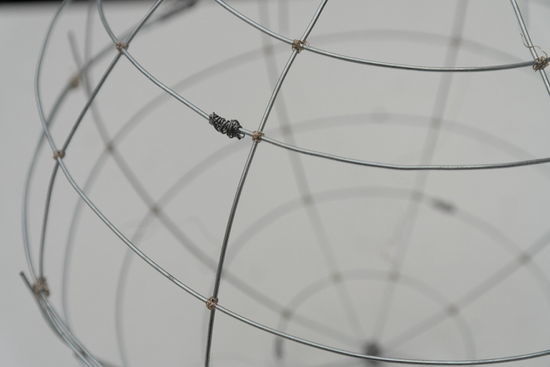
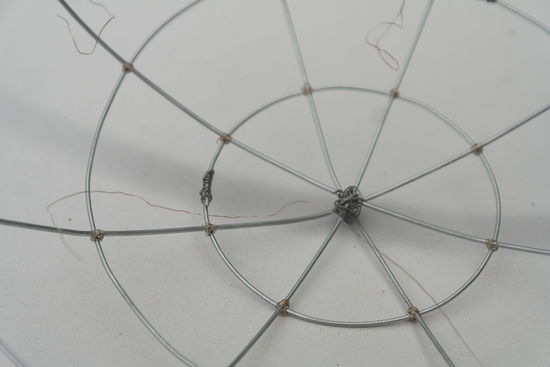
I accidentally uploaded this one, but the cat came to visit during the picures (sfeerimpressie yas)
As you can see it did kind of work. I made a sphere by binding wires instead of soldering them. But it is very fragile (that’s why I won;t bring it to the mini-expo). It therefore could only be used to be something pretty to look at, and not an actual useful construction. Perhaps with stronger wires used for the binding, though these were the easiest to wrap with.
Teamwork
For our joined example we (Robin, Heleen, Andrès and Jasmijn) first held a couple of meetings. We wanted to define the term wrapping for ourselves, and wanted to see how far we could push it, or wether there would be any shared interests surrounding the topic. Andrès has the paper on this, might make text better, come back to this later.
Sushi
I also tried to wrap food with Robin cuppens For now just a link to her page, more to follow.
A final tangible and communicative artefact that is representative of your own statement on making.
I wanted to go back to something we’d discussed in the group. About making the invisible visible by using wrapping techniques. At first I thought this far too ambitious, but it did sound interesting, almost magical. So I went ahead with the idea, but twisted it a bit. Something else that seemed interesting to me was: what if I could wrap with materials that you could not touch? Would it still be craft? Would I still be a maker? Would it still be wrapping? So I wanted to wrap with light. In the final product (which became a kind of performance) you can use my art-thingy to make something that looks like it is a fabric of wrapped light. But it is only visible by using smoke or steam, and only temporary and untouchable, and therefore unusable. Once again, something that could be seen as a waste of space, a useless little pretty to occupy our minds and forma distraction from the repetetive survival to exist and live. But at the same time when I finally got it to work, it filled my with giddiness: I had done it! I had crafted with light! And so my piece might have no function, but it has a purpose: to inspire, to entertain, to interact and enjoy. And I guess that’s still something.
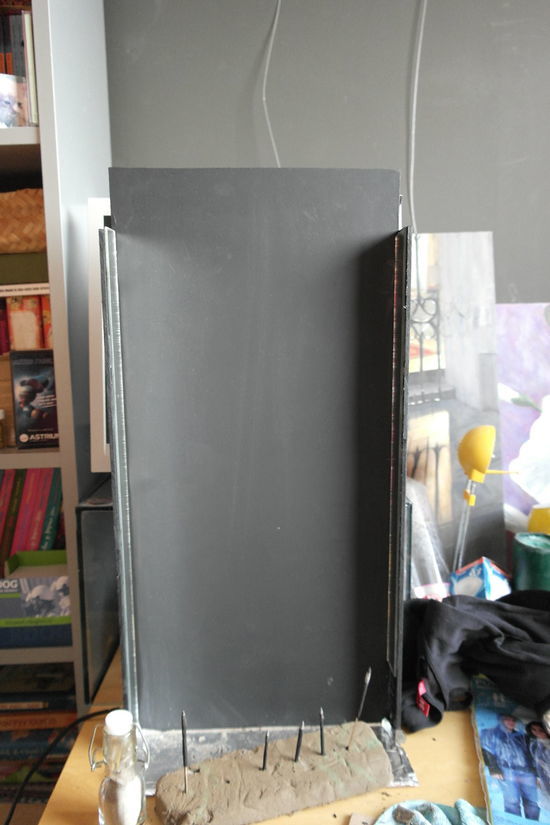
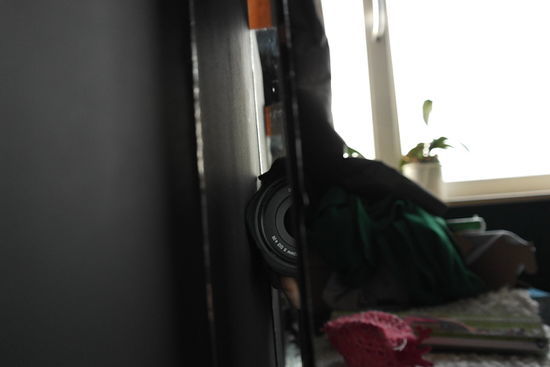
Why I make
For a momemtn I feel more centered, more… real. That I toiuch and make and create and control. It is calming, to work with my hands instead of always being stuck inside my head. It is also the only way I can share. Makes me feel more grounded, more real. More focussed. Not quite as useless. It doesn;t require thought, thought is what you put in ahead of making. First you think, then you make. thinking is also nice: without thought the make process becomes uncorordinated, more spontious but without any input it won;t go anywhere, it becomes useless and kind of sad. Perhaps to get out of my head and participate in this world hopefully a table of content will magically appear
Mini Exhibition
Type type type
- historisch: sushi: nadnken over wat wrapping allemaal kan zijn, vreemde materialen etc.
Making it useless, by using the same colours as the fabric, adding basically nothing to the item with a technique that is supposed to stand out and be seen. Metaphor for life: it's fucking useless, but its something. I guess. A mess? Idk if to make it neat and organized or a big mess of threads and stitches. We do try to order and find sense and meaning, but in the end its just stiches bitches. sorry couldn;t resist. In the end its just endless rows of stiches, unnoticable and unimportant. But I guess its something.
Maybe making a shirt out of strips of fabric and knitted fabric. Make it uncomfortable and itchy. gun b gr8.
Or drilling holes in wood and using embroidery techniques to pull it all together, again missing the point of the technique (to embellish, not as a structure). Fun times.
Or a puppet (skeleton + removable/super stretchy skin): make stopmotion of it ketting sewn onto a table or something, stretching its skin (may not look comfortable: must look as in agony cause that sounds painful man).SWAT. Man I love 21pilots <3. You are surrounding all my surrounding sounding....AND I'LL BE HOLDING ONTO YOOUUUU.
This is kinda like a not so secret or personal diary. Guessing nobody will read this until they have to. Like me doing this project #motivated
hskhjdfhkjfdskhjdfskhjsdfjkhdfsjkhdfsjkhsdfkhjsdfguuuuuuuuuguguuuuuuuuu I should not have been given this. I don't even know what they're singing anymore, but it's great. LYRICS THAT MEAN NOTHING WE WERE GIFTED WITH- THOUGHT I cleaned my room today. Finally able to close my closet door. Makes that corner look a lot more spacious and light. I don't like it.TO ALL THE GLOWING EYES. yes Tyty, glowing eyes sing along.
Soooooo.... knitting, amIright? 'I know some people who know people who are flying straaiight. Not this bird yo. Okay that might be enough.
Q9: human machines
on the body
three short videos: Light
one slightly longer video: Light
Light
The black rectangle is a gif: click to play (may need to click twice)
I wanted to do something with the light on your face and how we use light at night to replace daylight. My original idea was much longer, but due to time I kept it short. I planned to make a couple of these shots, also with the light as if someone's on their phone, or a car passing by, or light from a fair, things you might pass by at night that give of a lot of (artificial) light. I then wanted to put (wehre there is anow a sunrise, which is what I had in mind for this piece) a video of the thing that the artificial light is trying to recreate on the face. So for instance the light from a phone shining up on your face would be filled in with a video of a social meeting in daylight. But like I said, time and prioritizing, so I made a small part to show the visuals and how I could go further with this.
Proces
-I wanted to put the different videos in as gifs but some were too big for the wiki, so I put them in as links to youtube-
First I shot a video:
Original film (shortened version)
The first video I shot was too light, so I couldn't clearly see the "outline" of the light, so I redid it in a darkened room.
Then I rotoscoped the outline of the light, only looking at the light on my face and hair:
Opening a new file without the original video:
The black rectangle is a gif: click to play (may need to click twice)
FIlling in the background:
Last part was changing the mask to black and putting the sunrise video behind it:
All the layers from the gif made an interesting image:
What next?
(this is the second time writing this text (thnx wiki for logging me off and deleting the text) and I forgot most of what I wanted to say because my brain is fried. So good and bad news: less to read, but less information).
Was struggling with this. First thought of ... Okay, I wrote down my entire thought process for this but my brain is a mess due to lack of sleep so I'm just going to describe what I want to do in Q10.
I want to build some kind of sculpture with a projection overlay. The projection would kind of tie into the light project I made. The goal is to confuse people with the image, to make them lose their sense of reality, and question what they're seeing.
The projection will be a visual similar to the sculpture, but slightly warped, or moving, making it confusing to look at the sculpture. Like an optical illusion. I would like to try to make a simplified projector, perhaps one that the viewer would be able to control slightly, so something like twisting the lens to warp the image. There would be a goal attached: something that would make the viewer want to see the sculpture more clearly, thinking that changing the light would be the solution, but since the projection and the sculpture would never truly overlap and always stand in each other's way, the only solution would be to stand in front of the projector to block the light entirely. Then something would become visible on the sculpture, giving the viewer something of an "Aha!"-moment.
The project is based on my experience with the digital environment: although I love spending time on the computer, I also hate spending time in this digital reality. I dislike the strange combination of something so easy, entertaining and addictive but at the same time surreal, confusing and distant. My view becomes more clear when working with 3D modeling programs, like maya or 3D coat: I know what I want to make, and if you give me a piece of clay I'll be able to make it, but a computer has such a different way of thinking that it makes something easy become difficult. I look at a 2D screen in which I have to make a 3D object, something I'll never be able to touch and never seems real, though I do feel sad when maya crashes and deletes it.
It is this digital environment that gives my brain some kind of itch, but that does make me appreciate "real life" craft more. So I want to use this assignment as an opportunity to work with craft, and make something in the physical world, but will combine it with digital visuals to give the viewer my experience with digital reality.
- What kind of sculpture will I make? Why? (what can I base this on?)
- What will the projection look like? What will it have to do? How will it work together with the sculpture?
- Will my idea come across? Or is it too closed off? Can people still have their own experience, or is it too obvious?
Jon feedback: (later remove this? or edit)
Light under water
since I'm more interested in using this practice for making something other than a video I (for now) dropped the idea of making a narrative video. Instead I worked on making something that would be interesting, focussing more on the visual than the narrative of meaning, for trying to tie any kind of "conclusions' to the project now would feel kind of forced. I do think I might need to formulate a clear research question, to form an angle to look at things, but since I kept getting stuck and being unhappy with ideas I thought it best to just try to make something, and ideas would spring from there.
So I did think more about projecting something on an object, but I didn;t really know what, and felt that was important for it could easily become a disney-world animatronic-situation, something I'd like to avoid. I kept going with the idea, and ended up with a projection through water. It's something I've wanted to try for a while, and am interested in what I can do with it.
I made a kind of tube/box, the inside covered in reflective (wrapping)paper, that would neatly fit a small container on top and a phone on the inside. I used my phone as a light source: I could use the flashlight but mostly so I could play video's, and lay it underneath the container, which I filled with water.
Results: It turns out that mostly the screen of my phone is not a strong enough light source, so I did get seom kind of water/light ripples relfected on a white "wall" but it was not very clear, especially for the camera. I do still want to make that work, I liked the flashing colours and would like to try something with a moving light, but I'd have to use some kind of projector, but I don;t think the school would like it very much if I hung a container of water above one of their beamers... so that's something to work out. When I used the flashlight instead it had a much bigger effect, more in the lines of what I'd expected. It relfected all off the walls and the ceiling. I thinkt the shapes were created by a combination of the shape of the container and the geometric shapes in the relfective paper, since they did get influenced by the movements of the water but were still there when that water was still. I would like to use a bigger container with water: I'd then be able to make bigger and more interesting ripples or a constant movement, for it was now still a but static.
I'd like to continue with this, being improving this with a better light source, a bigger container and a different video underneath, or use it in something else, try more with reflection and movement.
Jon Feedback:
More around the theme How to be Human, explore and try more, where on what is it relfected? What is moving that water and why? Maybe a clock, some animal going through it, something.
seperate thoughts
Was also thinking about can machines be unpredectable? Can they be bored? What if a "bored" machine would make it move? idk try more, I guess. guh
How to be un-human?
I turned the question around: how to be inhuman? What does it mean to human, you can also view it from the other side: what is not human? (came to this after watching dwdd college about symmetry, the guy that solved a math thing by not thinking all the things it could, but by trying to prove it could not be, don’t remember exactly what but thats not important)
I talked about it with a friend, about what we see as inhuman, or not human. At first we though of things like war, and violence, things we would easily say to: how could they do that? they are not human, they are monsters. But we don’t see any other species fighting each other in the way we do: I don’t think a wild animal would torture another for any kind of reason. So these are things that are actually very specifically human, but simply sides of our nature that we’d rather not see. They are as much un-human but rather unethical; things that we condemn other humans for, to put them outside of our society, to say they no longer belong with us, are no longer part of our group called “humans”, rather calling them monsters or animals (even though humans are animals but that is a discussion for another day). Putting them outside for our safety but perhaps also fear, because if they are not human, then they are not like us. If they are, than perhaps any of us could, even ourselves, could be like them, which is a scary thing to think about.
Then what about robots and machines? They are something we still don’t recognize as humans, and this is an interesting one, because now we get to consciously define when something or someone gets to be human. It is no longer only our offspring, because we can make robots just as much as babies, which are both things that can think and do, they can make and make mistakes, they can change and grow and need sustenance to stay conscious. Physical appearance is a big part of this: robots do have to go through the uncanny valley, but once they come out, or stay far enough on the other side, they can be considered humans, or we can recognize body language and emotions on them, personality, and we can grow attachments on them. Metal skin does throw up a barrier but these days we can make silicones and fur and other synthetic warm materials to cover it all up for a nice hug. But we still don’t consider them truly human, they are still beneath us. A relationship with a machine or robot does not feel as real, probably because we told them to like us. We programmed them for that relationship, what they say and what they do, what they think and what they want. Unlike other humans we can still control them. And I think that is where the line might be: we make them, just like babies, but a baby cannot be controlled. We can communicate with them but we’ll never truly know how the brain and other people work, there is some mystery and unpredictability to it, something machines definitely lack. Machines can learn and develop, sometimes even on their own, but they always do it because we told them to, not because they though to do through a combination of years of evolution of genetics and certain nurtured behaviorism. Their “life” feels more forced, we can do what we want and if it all turn into the apocalypse when can just shut it down, without ethical consequences.
Or bored machines. Machines are not bored, but humans would prefer a negative stimuli over no stimuli.
Another way in which I could try discover what we think of as un-human, is by looking at our media; the way in which we change animals to make them human, how we portray aliens as, well, alien, generally what things do we add to or remove from things to make them more or less humane? Like anthropomorphism, adding human characteristics to animals or objects to humanize them. This teaser trailer from Zootopia actually explains it quite nicely, and is also a good example: https://www.youtube.com/watch?v=g9lmhBYB11U . It shows we add clothes, and stature to animals to make their appearance more human. We actuallly also change the face to make it show expression and communicate like we do, and of course speach, but that they don;t mention in the clip. We give them some of our typical and recognizable behaviour, make them move like we do, and share our values and ethics, and voila: you recognize them as humane characters, even though you still kind of see a fox and a rabbit. On the other hand, making something alien. We can see that in movies about aliens, like Avatar, or Alien, anything basically with anything extratereestiral we can see how we would define something not of our species, not even from our planet: weird shapes of the bodies, usually slimy worm-ish things, unrecognizable face, hard to read their emotions. Something like Steven Universe, in which the aliens are mostly humane in appearance, does show how they are not human: they don’t understand us in our behaviour and thoughts, they don’t understand our (social) rules, their bodies are a manifestion of light so are they even real or more like a mirage? But they also seem to purposeful: they know what they are and what they need to do from the moment they exist, until the day they are shattered. They never get to choose, or be unsure, or do something stupid and useless. Like a machine, we often protray aliens as perfect beings, flawless but static in their nature. Humans get bored, they change their mind and choose their path, and sometimes they choose wrong. They do things because they feel nice, like watching a sunset: something that really doesn’t have another purpose than feeling good, but does take time that could be spent more productively, though when we do we consider ourselves less humane and more like machines. Perhaps why so many digital stuff around us is making is stressed and suspicous. Sidetracking again. But it doesn’t even have to make you feel good, we also watch or do things we know will make us sad or angry or scared, simply to feel those emotions. Because there is something nice about crying or ranting or being afraid. Because we’d rather have negative stimuli than no stimuli.
